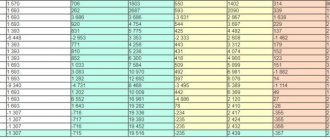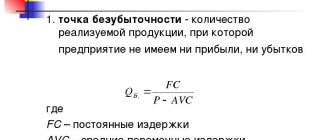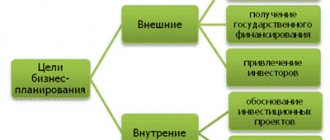olegas 2 years ago / 93 Views
The entire set of relations that take place during the exchange of various kinds of material and intangible goods through the mediation of money (as a universal means of payment) is usually called the financial market in economic theory.
Financial markets can be called the driving force and basis of the mechanism of the modern economy. The more coordinated and efficient they work, the faster the economy develops.
Introduction
Exchange of some economic goods for others, exchange of the currencies of some countries for the currencies of others, trading in securities, lending, etc. – all these are types of transactions performed on the modern financial market. And in the case when we are talking about such operations carried out on the scale of entire states among themselves, then we are already talking about the global financial market.
Thus, according to the scale of operations, the financial market can be divided into two main categories:
- National financial market;
- International financial market.
In the national market, transactions are carried out on the territory of a single state. Accordingly, it is fully subject to national legislation. And the international market is nothing more than the totality of all individual national financial markets and therefore cannot be subject to the laws of any individual state (it has international norms, rules and standards specially created for these purposes).
In the modern economy, there are two main models of financial markets that have developed in the countries of continental Europe and America:
- The continental model, based on bank financing, is also called the continental model or bank based financial system.
- Anglo-American model based on the securities market and institutional investors (market based financial system).
The continental model is distinguished by a less developed secondary market and non-public placement of securities (a relatively small number of shareholders and, accordingly, a high degree of concentration of share capital). In the Anglo-American model, on the contrary, the secondary market is much more developed and there is a pronounced tendency towards public offering of securities.
However, over time, these two models increasingly converge with each other and the boundaries between them are gradually erased.
Forms of existence of financial markets:
- In the form of an organized structure (for example, an exchange, where all trading operations are carried out according to strictly defined rules);
- In the form of direct agreements (for example, the interbank market);
- In retail form (for example, the market for banking services for individuals).
Finally, all financial markets can be classified by industry:
- Money market;
- Capital market;
- Stock market;
- Derivatives market;
- Currency market;
- Precious metals market;
- Cryptocurrency market.
Money market
Economic relationships for the purpose of receiving or providing funds for short periods (up to one year) are called the money market.
The money market has three main components:
- Short-term securities;
- Interbank loans;
- Eurocurrencies.
All money market participants can be divided into three categories:
- Lenders or those who provide money for temporary use. This category includes banks, non-bank credit institutions, and other financial organizations;
- Borrowers or those who borrow money. This category includes individuals, state and municipal structures, various types of enterprises and organizations, etc.;
- Financial intermediaries provide a link between the two aforementioned categories of money market participants, although, in principle, their participation is not always necessary. These include banks, professional participants in the securities market (brokers, dealers), etc.
All of the above categories of money market participants have one common goal - everyone intends to benefit. Lenders make a profit due to the interest rate at which they issue loans. Borrowers intend to make a profit from the use of borrowed funds. And the benefit of intermediaries lies in the commission that they charge from lenders and borrowers for bringing them together and often acting as a guarantor of the transaction concluded between them.
Below is a picture illustrating the main money market instruments:
What kind of brokers are these?
Now let's talk about brokers. They also need a license from the Bank of Russia. But, as a rule, it is issued to legal entities. That is, this concept refers to the so-called brokerage houses. Their interest is the commission they receive for the intermediary services they provide to their clients. Often a brokerage firm is the official representative of a particular player in the financial market. But special caution must be exercised here.
The global network is full of offers from such companies. They are designed for ordinary people - Internet users who don’t mind making extra money on the World Wide Web. There are, indeed, some good, honest resources among them that allow you to get an idea of brokers from video lessons, undergo training, gain access to your personal account, and even open an account. But again, in this area there are plenty of those who want to quickly make money from ordinary network users.
Capital market
This branch of financial markets includes long-term financial transactions (loans, investments, etc.). In essence, this is the same money market described above, but only with financial maturities exceeding one year.
So-called long-term money circulates here; capital is invested in various kinds of long-term financial instruments (stocks, long-term bonds, etc.).
The capital market has the following structure:
Stock market
Everything related to the issue of securities and their further circulation (purchase, sale, resale) directly relates to the next branch of financial markets - the stock market.
The stock market includes not only organized trading platforms - exchanges, but also the so-called over-the-counter component. Securities of the largest and most reliable issuers are quoted on the exchange market (including securities related to blue chips), and the over-the-counter market serves as a haven for securities classified as risky (for example, shares of the second and third tier that are not listed on exchange platforms).
The securities market can be classified according to the following main criteria:
- By level of placement of negotiable financial instruments:
- Primary. Here, as the name suggests, an initial placement of securities occurs (this can be either a public (IPO) or a private placement);
- Secondary. This is the market most known to a wide range of people, where, in fact, the bulk of securities trading operations take place. It includes all stock exchange platforms;
- Third. This is an over-the-counter market and those securities are traded on it that, for certain reasons, could not be listed on official exchange platforms;
- Fourth. Large institutional investors trade here. Trading takes place electronically, in large blocks of shares (or other securities).
- By type of financial instruments traded:
- Stock market;
- Bond market;
- Derivatives market, etc.
- By degree of organization:
- Exchange;
- OTC;
- By level of globalization:
- Regional;
- National;
- International.
- By issuer of traded securities:
- Enterprise securities market;
- Government securities market.
- By longevity of traded financial instruments:
- Short-term securities market;
- Medium-term securities market;
- Long-term securities market;
- Perpetual securities market.
- By industries to which issuers of tradable securities belong.
Derivatives market
This is a market for derivatives (derivative financial instruments) with a specific maturity date (hence the name). The following financial instruments are traded here:
- Forward contracts;
- Futures;
- Options.
Based on the degree of organization, the derivatives market is also divided into:
- Exchange;
- OTC.
Trading in the derivatives market is characterized by a higher degree of risk compared, for example, with the stock or bond market. This is explained by the fact that in this case leverage is used (so-called margin trading). In addition, another difference here is the possibility of opening short positions (the possibility of shorting a particular financial instrument acting as an underlying asset).
Transactions on the derivatives market are concluded for the purpose of hedging positions open on the underlying asset, in arbitrage strategies or when making money on swaps (in the foreign exchange market).
Financial Market Instruments
The main function of a financial instrument is to generate income from its sale or transfer. The use of financial instruments implies financial liabilities of one party and financial assets of the second party. There are impersonal financial instruments (to bearer) and registered ones, which can be:
- Insurance policies;
- Certificates;
- By checks;
- Shares;
- Bonds;
- Bills of exchange;
- Futures;
- Options;
- IOUs;
- Mortgages;
- Credit cards.
Video on the topic:
Foreign exchange market (FOREX)
The international currency market Forex (Foreign exchange market) is a system of financial relations, the purpose of which is the purchase or sale of some foreign currencies for others. In terms of the volume of transactions performed, the FOREX market significantly exceeds all other financial markets.
The FOREX market does not have any specific trading platform (such as an exchange), it is rather the entire set of communications connecting its largest players (banks, transnational corporations, brokerage firms, etc.).
The main participants in the foreign exchange market are:
- Central banks of countries. Their main activity here comes down to managing national foreign exchange reserves in order to regulate the exchange rate of their currency. For this purpose, they can conduct so-called currency interventions;
- Banks (mostly international). This is one of the types of institutional investors in the Forex market. It is through them that the bulk of all financial flows pass here;
- Companies engaged in import-export operations, for example, for the purpose of purchasing raw materials and selling finished products;
- Various types of funds (investment, pension, hedge) and insurance companies. They conduct operations here in order to diversify their portfolios as much as possible by purchasing various types of securities outside their country;
- National currency exchanges. These operate in a number of countries and their main purpose is to quote their national currency against a foreign one, as well as currency exchange for legal entities;
- Brokerage firms and dealing centers acting as intermediaries for carrying out trading and exchange operations on FOREX;
- Finally, private individuals. The contribution of each of them individually may be completely insignificant, but in total, the financial flow from international tourism, simple exchange transactions and speculative currency transactions of individual citizens can reach very impressive volumes.
Small market participants
Small participants include private speculators conducting purchase and sale transactions for their own speculative purposes, small brokerage and investment companies.
Regardless of trading approaches (investment or speculative), the frequency of transactions (long-term investments or HFT algorithms), they operate with insignificant funds and do not have a big impact on the value of assets.
However, it is important to understand that the power of small players lies in collective wisdom. If a large number of small speculators are expecting a certain event in the market, the price will likely move in that direction.
Precious metals market
The precious metals market can be identified as another component of the global financial market. It carries out transactions both directly with precious metals and with securities tied to them (futures, bonds, options quoted in gold, as well as gold certificates).
Based on the type of precious metal traded, this market can be divided into the following main components:
- Gold market;
- Silver market;
- Platinum Market;
- Palladium market.
Based on the type and volume of transactions carried out, the precious metals market can be classified as follows:
- International precious metals market;
- Domestic precious metals market;
- Black (underground) market for precious metals.
The international market has the maximum trading turnover; large investors, international funds, as well as central banks trade on it. The largest international trade centers are located in cities such as London, Zurich, New York, Hong Kong, Chicago, and Dubai.
Domestic markets for precious metals involve trading operations within the country. They are characterized by certain government regulation, expressed in the setting of taxes, quotas, trade rules, etc.
A black or underground market for precious metals occurs when the government places severe restrictions on such transactions. When, for example, the trade in gold is prohibited, it begins to be sold illegally (by smuggling into the country).
In addition, this market can be classified according to the purpose of the purchased precious metals:
- For investment purposes;
- For industrial use (for example, in electronics).
Cryptocurrency market
This is the youngest financial market represented here. The history of its existence began with the emergence of the world’s first cryptocurrency in 2008 and goes back only about one decade. Its structure is currently not yet fully formed (partly due to the fact that in many countries there is no legislative framework regulating operations carried out with cryptocurrencies), but in general it can be represented as the entire set of existing cryptocurrencies and the infrastructure that provides their existence. This infrastructure includes both computing power, thanks to which new cryptocurrencies are generated and stored, as well as the entire set of organizations involved in their sale, purchase and exchange (cryptocurrency exchanges and various kinds of exchangers).
Cryptocurrency is an asset that is entirely dependent on computing power. The technology of its creation (popularly called mining) is based on blockchain computer technology. Purely theoretically, anyone with a computer connected to the Internet can mine some cryptocurrency. However, in fact, in order to earn an amount equivalent to at least a couple of American dollars in this way, it will take quite a lot of time. The fact is that the very nature of cryptocurrency is designed in such a way that the more it is mined, the more complex this process becomes, and the extraction of new coins (coins) requires more and more computing resources.
Currently, specialized mining farms consisting of many powerful video cards are used to mine cryptocurrencies. You can generate cryptocurrency either using a processor or through calculations on a video card. It so happens that the video card has the architecture most suitable for those calculations through which new coins are created.
Cryptocurrency mining farms can consist of several video cards, or thousands or even tens of thousands. Most of these large farms are located in the Asia-Pacific region, in particular in China (as of the end of 2020, about 30% of the entire global cryptocurrency market was concentrated there).
The most popular cryptocurrencies at the moment are (arranged in descending order of value):
- Bitcoin;
- Bitcoin Cash;
- Dash;
- Ethereum.
In addition, there are still a huge number of different types of cryptocurrencies in the world, many of which do not represent and, most likely, will never represent any value.
The most well-known platforms that provide the opportunity to trade cryptocurrencies (so-called cryptocurrency exchanges) are the following (arranged in descending order of trading volume):
- Binance;
- HitBTC;
- LiveCoin;
- YoBit;
- Exmo;
- Poloniex;
- Kraken et al.
You can obtain more detailed information on this topic by clicking on the following links:
- Where to trade cryptocurrency
- How to mine cryptocurrency
- How to buy and sell cryptocurrency. Step-by-step instruction
- Cryptocurrency Trading Strategies
The essence of the financial market
The financial market is an established system of trading money itself and its equivalent, which promotes the constant movement of monetary resources of investors, enterprises, the state and other participants. That is, this is a space in which participants sell or buy any financial instruments. Simply put, it is a regular market where transactions are made for a variety of types of goods, including securities, currencies, debt obligations and much more.
The key point is that the development of communication systems has led to information centralization. This means that a Russian citizen can purchase shares owned by a Japanese citizen who bought them from a Canadian citizen. There is such a gradation of financial markets:
- Regional. It may be some kind of exchange where citizens living in this city and nearby areas trade;
- Central. There may be several such trading platforms; they play an important role in uniting market participants throughout the country;
- International. Participants living in different countries have access to trading platforms in other countries. Previously, this was carried out by telegraph communication, but now everything is done electronically. Now it is possible to participate in transactions around the world using any instruments.
Financial markets are classified into two models:
- English, which is currently gaining popularity, and is widely represented in the US markets. The basic principle is that the majority of shares are offered to ordinary people, that is, the offer to participate in the business covers a wide range of people. This also includes many structures (for example, pension funds) that invest money. A characteristic feature is the active trading of shareholders who repeatedly buy and sell them.
- Continental, which is gradually shrinking around the world. It differs from the first option in that in this case a large number of securities are concentrated in one holder. In addition, banking structures are actively participating in the auction.









